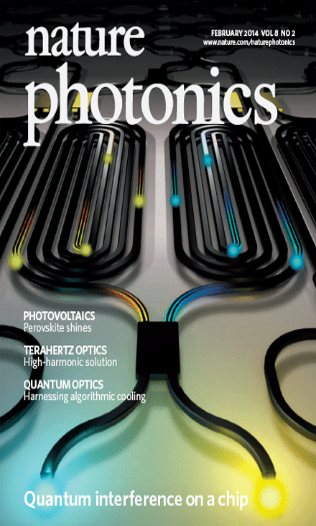
A silicon-on-insulator device that combines two four-wave-mixing sources in an interferometer with a reconfigurable phase shifter is presented. It does not require any external photon sources, and represents a first step towards realizing fully integrated quantum technologies.
IMAGE: YUE ZHANG, JOSH SILVERSTONE, DAMIEN BONNEAU AND MARK THOMPSON
“We were surprised by how well the integrated sources performed together,” admits Joshua Silverstone, lead author of the paper. “They produced high-quality identical photons in a reproducible way, confirming that we could one day manufacture a silicon chip with hundreds of similar sources on it, all working together. This could eventually lead to an optical quantum computer capable of performing enormously complex calculations.”
Dr Mark Thompson explained: “Single-photon detectors, sources and circuits have all been developed separately in silicon but putting them all together and integrating them on a chip is a huge challenge. Our device is the most functionally complex photonic quantum circuit to date, and was fabricated by Toshiba using exactly the same manufacturing techniques used to make conventional electronic devices. We can generate and manipulate quantum entanglement all within a single mm-sized micro-chip.”
The group, which, includes researchers from Toshiba Corporation (Japan), Stanford University (US), University of Glasgow (UK) and TU Delft (The Netherlands), now plans to integrate the remaining necessary components onto a chip, and show that large-scale quantum devices using photons are possible.
“Our group has been making steady progress towards a functioning quantum computer over the last five years,” said Thompson. “We hope to have within the next couple of years, photon-based devices complex enough to rival modern computing hardware for highly-specialised tasks.”
The full copy of the paper can be found at the Nature Photonics Website.
